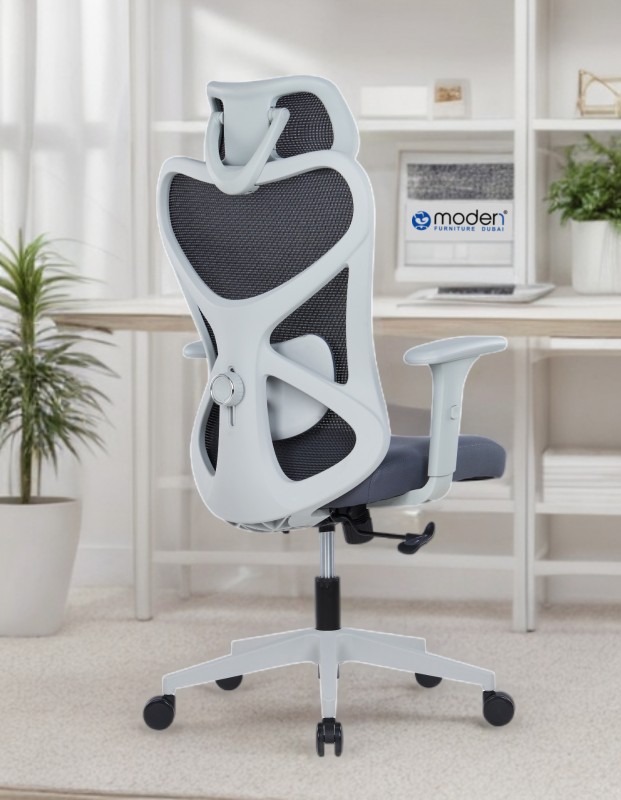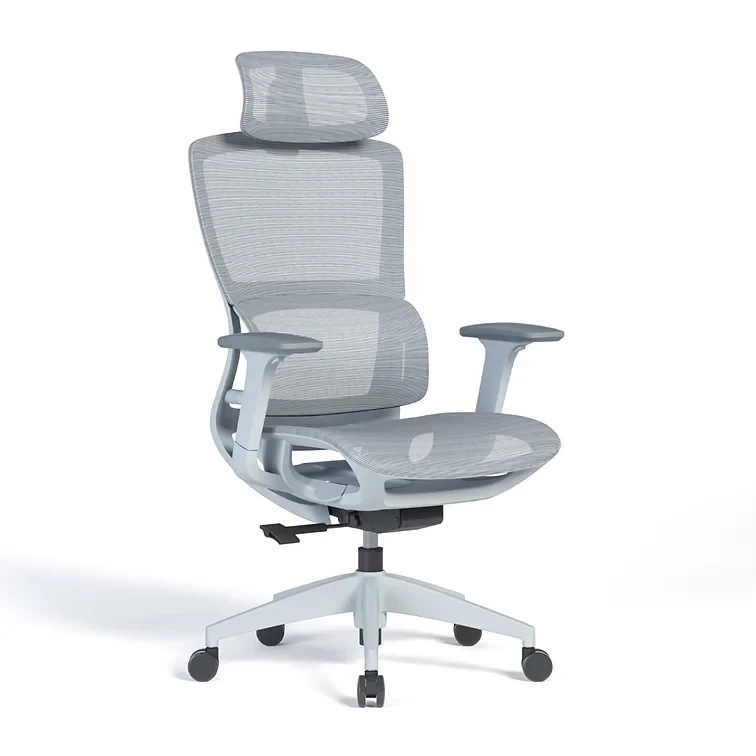
Best Office Chairs for Tall Users: Comfort Without Compromise
Introduction
For tall professionals, standard office chairs often fall short—literally. Lack of seat depth, inadequate back support, and low headrests can make long workdays uncomfortable. A chair designed with taller users in mind changes that completely. These chairs offer the right seat height, proper leg support, and full back and neck alignment. In this guide, we’ll explore what makes an office chair ideal for taller frames and how to choose the perfect model without compromising on style or function.
1. High Backrest with Neck Support
Tall users require chairs with extended backrests that rise high enough to support the neck and upper spine. A headrest or high back ensures that posture remains aligned, even during long hours of work or meetings.
2. Extended Seat Depth
A deeper seat pan supports longer legs and prevents pressure behind the knees. Chairs with adjustable seat depth are ideal, allowing customization that ensures full thigh support without cutting off circulation.
3. Higher Seat Height Range
Standard seat heights don’t suit long legs. Chairs with pneumatic lifts that go beyond the usual range provide the flexibility tall users need for proper ergonomic alignment with their desk and feet placement.
4. Sturdy Frame and Weight Support
Taller chairs must also be built to support heavier frames without flexing or becoming unstable. A strong metal base, reinforced components, and a higher weight capacity ensure safety and durability.
5. Adjustable Lumbar Support
Taller backs need correctly positioned lumbar support. Chairs with movable lumbar cushions or height-adjustable support areas help align the lower back, preventing slouching and fatigue.
6. Adjustable Armrest Height and Width
Armrests must be adjustable in height and width to ensure arms rest naturally beside the torso. For tall users, having wide-set armrests and the ability to raise them is critical to prevent shoulder strain.
7. Tilt and Recline Tension Control
With a longer torso, tall users benefit from tension-adjustable tilt and recline systems. This feature allows personalized reclining pressure that supports the back without tipping uncomfortably.
8. Breathable and Supportive Materials
Whether mesh or cushioned fabric, tall users need firm yet comfortable material that supports weight distribution. Mesh chairs allow airflow and contouring, while memory foam seats offer pressure relief.
9. Headrest Adjustability
If a chair includes a headrest, it should be height- and angle-adjustable to match taller neck positions. A fixed headrest may fall too low and create neck discomfort for taller individuals.
10. Wide Seat Base
Narrow seats feel cramped for tall users. A wider seat base ensures comfort and mobility, letting users sit with proper leg spacing and side support throughout the day.
Additional Considerations for Tall Users
11. Compatibility with Desk Height
An ideal chair should allow you to sit with your elbows at a 90-degree angle relative to your desk. Taller users often need higher desks or sit-stand desks to complement their chair height.
12. Mobility and Stability
A five-point base with smooth-rolling casters is essential for chairs that are larger and taller. Stability prevents tipping while moving, especially for taller individuals shifting in their seat.
13. Footrest Add-Ons
Even with a high seat, a footrest can make a difference for ergonomic support. Tall users may want to explore chairs with optional or built-in foot support for better circulation.
14. Back Angle Adjustability
The ability to independently adjust the angle of the backrest allows tall users to find their optimal recline, maintaining back support while shifting positions during the day.
15. Contoured Seat Cushioning
Chairs with waterfall-edge seats and contoured foam relieve pressure points under long legs. This helps reduce fatigue and prevents discomfort in the thighs.
16. Durable Upholstery
Taller users exert more pressure on the chair’s surface. Choosing chairs with high-resilience mesh or high-quality upholstery increases durability and long-term appearance.
17. Smooth Height Adjustment
A gas lift that works smoothly even at higher ranges is critical. Tall users should be able to adjust seat height without resistance or awkward mechanical issues.
18. Head and Shoulder Alignment
Proper ergonomic design should support tall users' shoulders as well as the head. A chair that curves and rises to match the upper spine improves overall alignment and energy levels.
19. Chairs with Memory Foam or Layered Support
Instead of flat padding, look for chairs that use memory foam or multi-layer cushioning for long-term comfort. This prevents sagging and adapts better to taller bodies.
20. Style Meets Function
Office chairs for tall users don’t have to look bulky. Many high-back executive chairs now combine sleek design with ergonomic enhancements, making them suitable for modern office aesthetics.
Recommended Products

-
UComfort Super Ergonomic Executive Office Chair – High Back (White)
With a tall backrest, head support, and sleek white finish, this chair delivers luxury and ergonomics—perfect for tall users who value comfort and elegance.
-
Chablo Executive High Back Ergonomic Office Chair – Grey
A smart choice for professionals over 6 feet tall, the Chablo chair features deep seating, adjustable arms, and modern mesh support to suit taller frames all day.
Final Thoughts
Choosing the right office chair as a tall user doesn’t mean compromising on aesthetics or features. In fact, many of today’s top ergonomic chairs are designed with inclusivity in mind—providing tall individuals with the support they need for productive, pain-free work. By focusing on height range, seat depth, and adjustability, you can ensure your chair feels like it was made for you. Investing in a chair that matches your frame is not only smart—it’s essential for long-term wellness and professional comfort.
FAQ
What seat height should a tall user look for in an office chair?
Ideally, the seat should adjust to at least 20 inches or higher to accommodate longer legs.Do tall users need a headrest?
Yes, a high and adjustable headrest can support the neck and upper spine, which is critical for tall individuals during long sitting periods.Is a mesh chair good for tall users?
Yes, as long as the mesh back is tall enough and the seat pan is deep enough to support long legs comfortably.Are executive chairs better than task chairs for tall people?
Executive chairs often provide higher backs and larger seat dimensions, making them more suitable for taller users.


